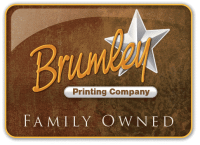 While many larger jobs that are better left to a professional printer, every small business also needs a reliable office printer for their day-to-day printing tasks.
While many larger jobs that are better left to a professional printer, every small business also needs a reliable office printer for their day-to-day printing tasks.
But with so many optional features and such a wide price range to choose from, selecting the right office printer for their specific needs can be a little confusing for many small business owners.
Here are some tips that we hope will help simplify the process.
What Will the Printer be Used For?
The first thing to consider when choosing an office printer is how much use it will get, the types of printing jobs it will be used for, and of course how much you want to spend. This last item can be a little more complicated than you might think because spending more to purchase the printer today could reduce the amount you spend on ink or toner down the road.
In a recent Business News Daily article, contributor Ashley Smith warned, ”The type of printer you’d pick up at an office supply store is not going to cut it for business use, at least in most cases. Even small offices usually need far more sophisticated machines for efficiency and productivity.”
The two most popular types of office printer are inkjet and laser / LED printers
Inkjet Printers
Inkjet printers tend to be more popular among personal and home office users, however, they’re also suitable for certain businesses. Inkjet printers are less expensive than laser/LED printers and can produce high-quality photo prints on a wide variety of media.
This makes them an ideal candidate for small-run printing jobs that contain color graphics, like brochures and fliers. However, they’re also much slower and replacement ink is expensive which makes them a poor choice for businesses that do higher volume print jobs. Although there are a handful or office-quality inkjet printers with networking capabilities on the market, the selection is small compared to network-capable laser and LED printers.
LED & Laser Office Printers
Whereas inkjet printers actually squirt ink onto the printing media, LED and laser printers project images onto a rotating drum which applies toner to the paper. Although they are more expensive to purchase than inkjet printers, they are also very fast, reliable, network-capable and have a lower cost of ownership because toner is relatively inexpensive compared to the inks used by inkjet printers.
They can produce high-quality text but are no match for inkjet printers when it comes to producing high-quality black and white or color images.
In our next article, we’ll discuss various office printer features and compare the pros and cons of leasing versus purchasing.
Did you find this article helpful? If so, please share it.
